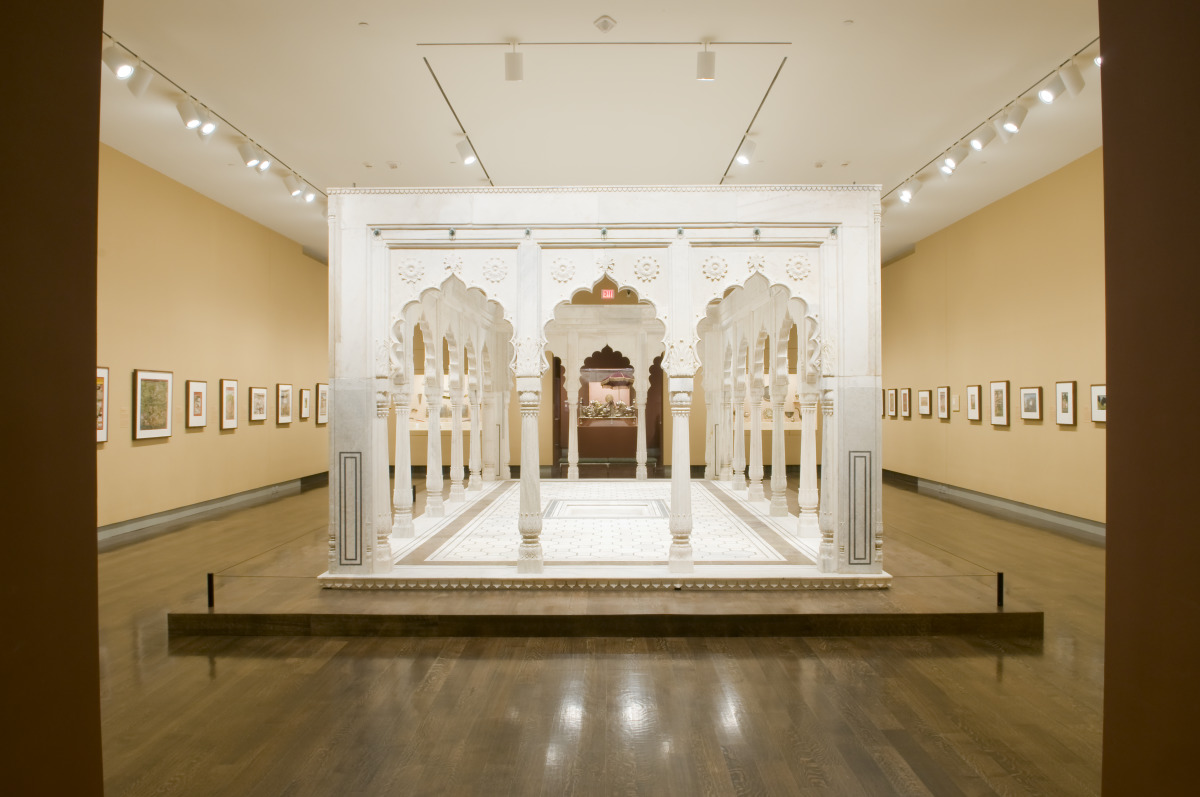
Garden Pavilion (Primary Title)
Unknown (Artist)
Elegant arcaded pavilions were standard features in royal gardens and palace complexes in India between the 17th and 19th centuries. Large examples could accommodate a ruler and his court, assembled for state business or entertainment. More intimately sealed pavilions such as this one were used for private retreat, pleasure, and contemplation.
This pavilion’s architectural style, like the garden where it once stood, owes much to the influence of the Mughals. These rulers brought with them from Central Asia a highly developed tradition of formal gardens that incorporated exotic plantings, cooling waters, and multiple structures intended for both leisure and ceremony. During the reign of Shah Jahan (1628-58), patron of the Taj Mahal, white marble became the favored construction material for such stately structures.
Associated with wealth and prestige, the Mughals’ refined architecture was quickly adopted by India’s many princely states and endured long after the Mughals’ decline. Stylistic comparisons suggest that this pavilion was created in the 19th century in eastern Rajasthan’s princely state of Bharatpur. It may have been commissioned by the ruling Maharaja of Bharatpur or by a wealthy noble from that region.
The white marble used to construct the pavilion is quite varied. The undersides of some pieces indicate that they were recycled from previous buildings, and the structure has been repaired several times. Some variations in the stone are, however, intentional, such as the matching grayish panels on each of the four corner piers. Bold inlays of mottled brown marble and black schist pattern the pavilion’s floor, at the center of which is a basin that was once fed by a gently splashing fountain. The pavilion’s delicate columns originally carried far more weight than they do now, including a ceiling of stone slabs and a considerable superstructure with stone brackets; deep, angled stone eaves; and possibly an observation deck surrounded by a railing.
The evocative structure is a fitting complement to this gallery’s paintings and objects, most of which were also produced for India’s princely courts. It is easy to imagine a noble seated in the pavilion leafing through an album of paintings, or a group of court ladies partaking of delicacies from jade and silver serving dishes while being serenaded by nearby musicians. Comparable structures appear in several of the surrounding paintings, some showing the sort of patterned textiles that probably once hung from the bronze rings above this pavilion’s arches. These hangings could be raised or lowered depending upon the angle of the sun and the occupants’ desire for privacy.
Some object records are not complete and do not reflect VMFA's full and current knowledge. VMFA makes routine updates as records are reviewed and enhanced.

